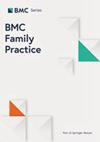Advancing social care integration in health systems with community health workers: an implementation evaluation based in Bronx, New York
IF 3.2
3区 医学
Q1 MEDICINE, GENERAL & INTERNAL
引用次数: 0
Abstract
In recent years, health systems have expanded the focus on health equity to include health-related social needs (HRSNs) screening. Community health workers (CHWs) are positioned to address HRSNs by serving as linkages between health systems, social services, and the community. This study describes a health system’s 12-month experience integrating CHWs to navigate HRSNs among primary care patients in Bronx County, NY. We organized process and outcome measures using the RE-AIM (Reach, Effectiveness, Adoption, Implementation, Maintenance) implementation framework domains to evaluate a CHW intervention of the Community Health Worker Institute (CHWI). We used descriptive and inferential statistics to assess RE-AIM outcomes and socio-demographic characteristics of patients who self-reported at least 1 HRSN and were referred to and contacted by CHWs between October 2022 and September 2023. There were 4,420 patients who self-reported HRSNs in the standardized screening tool between October 2022 and September 2023. Of these patients, 1,245 were referred to a CHW who completed the first outreach attempt during the study period. An additional 1,559 patients self-reported HRSNs directly to a clinician or CHW without being screened and were referred to and contacted by a CHW. Of the 2,804 total patients referred, 1,939 (69.2%) were successfully contacted and consented to work with a CHW for HRSN navigation. Overall, 78.1% (n = 1,515) of patients reported receiving social services. Adoption of the CHW clinician champion varied by clinical team (median 22.2%; IQR 13.3–39.0%); however, there was no difference in referral rates between those with and without a clinician champion (p = 0.50). Implementation of CHW referrals via an electronic referral order appeared successful (73.2%) and timely (median 11 days; IQR 2–26 days) compared to standard CHWI practices. Median annual cost per household per CHW for the intervention was determined to be $184.02 (IQR $134.72 – $202.12). We observed a significant proportion of patients reporting successful receipt of social services following engagement with an integrated CHW model. There are additional implementation factors that require further inquiry and research to understand barriers and enabling factors to integrate CHWs within clinical teams.利用社区保健工作者推进卫生系统中的社会护理整合:基于纽约布朗克斯区的实施评估
近年来,医疗系统已将健康公平的重点扩大到包括与健康相关的社会需求(HRSNs)筛查。社区保健员(CHWs)作为医疗系统、社会服务机构和社区之间的纽带,可以解决与健康相关的社会需求(HRSNs)问题。本研究介绍了纽约州布朗克斯县一家医疗系统在 12 个月内整合社区保健员为初级保健患者提供 HRSN 导航的经验。我们采用 RE-AIM(Reach、Effectiveness、Adoption、Implementation、Maintenance)实施框架领域来组织过程和结果测量,以评估社区健康工作者研究所(CHWI)的 CHW 干预措施。我们使用了描述性和推论性统计方法来评估 RE-AIM 的结果,以及 2022 年 10 月至 2023 年 9 月期间自我报告至少有 1 个 HRSN 并被转介给 CHW 并与之联系的患者的社会人口特征。2022 年 10 月至 2023 年 9 月期间,共有 4420 名患者在标准化筛查工具中自我报告了 HRSN。在这些患者中,有 1,245 人被转介给了在研究期间完成首次外展尝试的 CHW。另有 1559 名患者未经筛查,直接向临床医生或 CHW 自我报告了 HRSN,并被转诊至 CHW 并与之取得联系。在转介的 2,804 名患者中,1,939 人(69.2%)成功联系到 CHW 并同意与 CHW 合作进行 HRSN 导航。总体而言,78.1%(n = 1,515)的患者表示接受了社会服务。各临床团队对 CHW 临床医生支持者的采用率不尽相同(中位数为 22.2%;IQR 为 13.3-39.0%);但是,有临床医生支持者和没有临床医生支持者的转诊率没有差异(P = 0.50)。与标准 CHWI 实践相比,通过电子转诊单实施 CHW 转诊的成功率(73.2%)和及时性(中位数 11 天;IQR 2-26 天)似乎更高。每户家庭的 CHW 年度干预成本中位数为 184.02 美元(IQR 为 134.72 - 202.12 美元)。我们观察到,有相当比例的患者表示在参与综合 CHW 模式后成功接受了社会服务。还有一些实施因素需要进一步调查和研究,以了解将 CHW 纳入临床团队的障碍和有利因素。
本文章由计算机程序翻译,如有差异,请以英文原文为准。
求助全文
约1分钟内获得全文
求助全文
来源期刊

BMC Family Practice
医学-医学:内科
CiteScore
3.20
自引率
0.00%
发文量
0
审稿时长
4-8 weeks
期刊介绍:
BMC Family Practice is an open access, peer-reviewed journal that considers articles on all aspects of primary health care research. The journal has a special focus on clinical decision making and management, continuing professional education, service utilization, needs and demand, and the organization and delivery of primary care and care in the community.
 求助内容:
求助内容: 应助结果提醒方式:
应助结果提醒方式:


